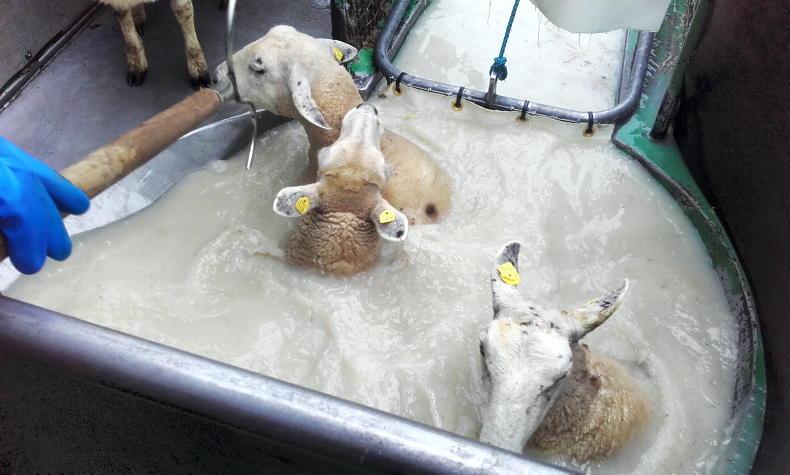Ram management:
Breeding has come to an end in the majority of lowland flocks and is at an advanced stage in hill flocks. This breeding season has been hard on young rams, with poor grass utilisation and a low dry matter content leaving rams with a significant workload, struggling to meet nutritional demands. As such, it is important that rams are removed from ewes to allow preferential treatment. This is particularly important for ram lambs who have a higher nutritional demand, to satisfy maintenance and growth requirements. Where rams have lost significant condition, then concentrate supplementation should be introduced. Re-joining rams after breeding can be tricky, as rams re-establish the pecking order in the group. Confining rams to a small space for a period will generally help rams to become accustomed to each other again and limit fighting.
Lice versus scab:
It is the time of year where queries start to increase on external parasite issues. Remember dipping is the gold standard treatment. Where not an option for one reason or another, then it is critical to differentiate if lice or sheep scab is the issue before treating, as there is no solution outside of dipping that addresses both. Using injectables for sheep scab should be a last resort, given the risk of anthelmintic resistance developing. If using though, it is important to follow manufactures guidelines, as a second treatment is required with some products or a higher dosage where targeting sheep scab. Bringing a couple of animals to your vet to take a skin sample for analysis under a microscope is a good move in identifying the route cause. It is also worth noting that sheep scab and lice can be present at the same time and also that other issues, such as fungal infections, can be to blame for sheep scratching.
Clean livestock policy:
It is not surprising that there has been a spike in issues again with the clean livestock policy. If in doubt that lambs are borderline Category B and are at risk of falling in to Category C, then it is worth speaking with the procurement officer in advance of moving sheep. Options including delaying drafting of sheep, or looking at measures such as clipping/shearing, can be looked at easier pre-slaughter. Once lambs arrive at a plant, then there is much less scope to take remedial action.
Ram management:
Breeding has come to an end in the majority of lowland flocks and is at an advanced stage in hill flocks. This breeding season has been hard on young rams, with poor grass utilisation and a low dry matter content leaving rams with a significant workload, struggling to meet nutritional demands. As such, it is important that rams are removed from ewes to allow preferential treatment. This is particularly important for ram lambs who have a higher nutritional demand, to satisfy maintenance and growth requirements. Where rams have lost significant condition, then concentrate supplementation should be introduced. Re-joining rams after breeding can be tricky, as rams re-establish the pecking order in the group. Confining rams to a small space for a period will generally help rams to become accustomed to each other again and limit fighting.
Lice versus scab:
It is the time of year where queries start to increase on external parasite issues. Remember dipping is the gold standard treatment. Where not an option for one reason or another, then it is critical to differentiate if lice or sheep scab is the issue before treating, as there is no solution outside of dipping that addresses both. Using injectables for sheep scab should be a last resort, given the risk of anthelmintic resistance developing. If using though, it is important to follow manufactures guidelines, as a second treatment is required with some products or a higher dosage where targeting sheep scab. Bringing a couple of animals to your vet to take a skin sample for analysis under a microscope is a good move in identifying the route cause. It is also worth noting that sheep scab and lice can be present at the same time and also that other issues, such as fungal infections, can be to blame for sheep scratching.
Clean livestock policy:
It is not surprising that there has been a spike in issues again with the clean livestock policy. If in doubt that lambs are borderline Category B and are at risk of falling in to Category C, then it is worth speaking with the procurement officer in advance of moving sheep. Options including delaying drafting of sheep, or looking at measures such as clipping/shearing, can be looked at easier pre-slaughter. Once lambs arrive at a plant, then there is much less scope to take remedial action.






 This is a subscriber-only article
This is a subscriber-only article










SHARING OPTIONS: